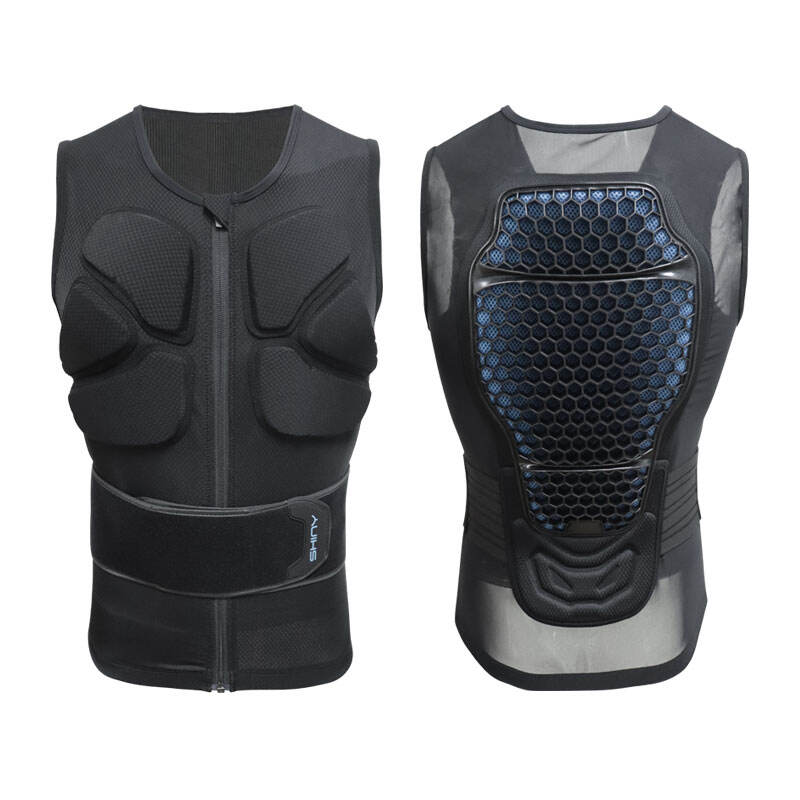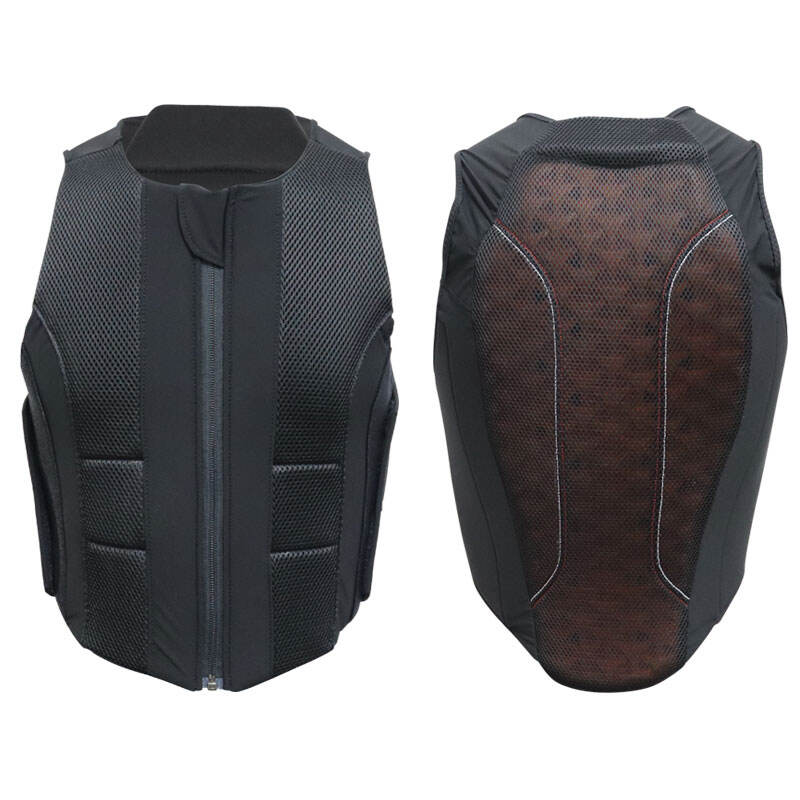The CE EN1621-2 standard is the cornerstone for ensuring safety in back protectors used in sports, outlining crucial impact absorption requirements. This standard categorizes protectors into two levels: Level 1 and Level 2. Level 1 provides basic protection, suitable for recreational activities, where minor protection from impacts is required. However, when it comes to serious sports or professional athletics, Level 2 protectors are more fitting, offering enhanced impact resistance and safety. Recent studies, including ones from credible safety organizations, have shown that back protectors conforming to Level 2 standards can decrease the likelihood of injuries by up to 60%. This statistic is significant for anyone participating in contact or high-risk sports, emphasizing the need for high-performance protective gear.
In essence, the difference between Level 1 and Level 2 lies in the amount of energy transmitted through the protector during an impact. For Level 1, the transmitted energy must not exceed 18kN, whereas, for Level 2, it is reduced to 9kN, providing much superior protection. These standards are vital for consumers in choosing suitable gear, ensuring a back protector is not just a piece of equipment but a reliable safety measure.
CE certification plays a critical role in confirming the reliability of back protectors concerning impact absorption and durability. Back protectors that have passed CE certification undergo extensive testing to guarantee they can withstand significant forces while minimizing injury risk. Historical data and numerous case studies corroborate the effectiveness of certified protectors in reducing injury severity during accidents, highlighting the tangible difference CE certification makes in real-world scenarios. Such evidence enhances consumer trust and helps in making well-informed purchasing decisions, further bolstering a brand's credibility in the market.
As consumers become increasingly knowledgeable about safety standards, they tend to prioritize products with recognized certifications like CE. This tendency has notably affected market dynamics, with more companies striving to achieve and promote their CE-certified products. For motorcycle back protectors, for example, consumers are looking for features beyond aesthetics or comfort, focusing on the assurance provided by certifications in protecting against severe impacts. Therefore, a CE mark isn't merely a label—it's a promise of safety, making it a must-have for any manufacturer serious about providing truly protective gear.
When it comes to protective gear, PU foam and hard shell materials play crucial roles in terms of shock absorption and flexibility. PU foam is renowned for its excellent shock absorption capabilities, making it a popular choice for protective gear like back protectors and motorcycle knee pads. Its soft and flexible nature ensures comfort during prolonged wear, which is vital for activities such as motorcycling or skiing. On the other hand, hard shell protectors offer notable advantages in high-impact scenarios, providing superior puncture resistance that PU foam alone cannot match. Research has shown that a combination of both materials can significantly enhance overall protection. By leveraging the strengths of each, manufacturers can create protective gear that offers the flexibility and comfort of PU foam, alongside the durability and impact resistance of hard shells, making them suitable for a wide range of activities.
Breathable mesh fabrics have become integral in the design of protective gear, ensuring comfort during extended wear by promoting airflow and reducing moisture buildup. This feature is especially crucial in high-intensity sports like biking and skiing, where overheating can adversely affect performance. For instance, when participating in these vigorous activities, the last thing you want is gear that traps heat and sweat. Advanced mesh technologies now allow fabrics to breathe and dry more rapidly, enhancing the overall user experience by maintaining comfort and focusing on performance. The shift towards using such innovative materials in protective gear reflects a broader trend in the industry focused on balancing protection with comfort. As a result, choosing gear equipped with breathable mesh fabrics is not just about safety but also about maintaining peak performance levels throughout the day.
Finding the right fit is crucial when it comes to protective gear, especially back protectors. A proper ergonomic fit ensures maximum safety and comfort during use. Protective gear is typically available in various size ranges from S to XL, accommodating different body types. This range allows users to select a protector that fits snugly, without restricting movement. According to statistics, wearing an ill-fitting protector can increase the risk of injury during impacts, underscoring the importance of choosing the correct size. Whether you're using a motorcycle back protector or a ski back protector, having the right fit can make a significant difference in injury prevention.
Elastic belt systems are integral to achieving a customized fit for protective gear. These systems allow for quick adjustments, ensuring a secure fit tailored to individual body shapes. An elastic belt enhances the stability of a back protector, minimizing unwanted movement, which is particularly vital during high-impact activities. User feedback consistently highlights comfort and security as key reasons for choosing gear with adjustable belt systems. In scenarios where security features are paramount, such as in motorcycle back protectors or hip protection gear, elastic belts provide the necessary adaptability. These features are undoubtedly vital in ensuring that protective gear is not only effective but also comfortable for prolonged use.
Motorcycle back protectors are vital for safeguarding against crash dynamics, especially in scenarios involving high-velocity impacts and abrasions. These protectors need to withstand the intense forces experienced during accidents, as statistics show that a significant percentage of motorcycle accident-related hospitalizations involve injuries to the back. This underscores the critical need for effective protection in this area. Additionally, safety regulations have outlined specific requirements for motorcycle back protectors, ensuring they meet the necessary standards to optimize rider safety. Adherence to these regulations is essential for protecting motorcyclists from potential life-threatening injuries.
Ski back protectors are uniquely designed for alpine sports, focusing on flexibility and lightweight materials to match the dynamic movements of skiing. Research into skiing injuries reveals that back injuries are relatively common, highlighting the importance of providing sport-specific protection tailored to these needs. As skiing involves a wide range of styles and preferences, the implementation of detachable features in back protectors allows for greater versatility and customization. Whether navigating moguls or gliding through powder, a well-suited ski back protector ensures safety without compromising mobility, making it an essential piece of equipment for any serious skier.
The SBP137 Enchuang ImpactShield is a standout option for those engaging in multiple sports due to its remarkable flexibility and uncompromised safety features. This back protector is cherished by athletes for its comfort and lightweight design, making it an optimal choice for those looking for versatility. User reviews consistently praise the SBP137's ability to provide superior protection without hindering performance across skiing, BMX, motorcycle riding, and horseback riding. Comparative analysis of accident rates reveals a noticeable decrease in injuries among users, underscoring the protector's effectiveness across different sports.

The SBP138 ImpactShield distinguishes itself in the marketplace through its EU/UKCA certification, which assures users of its strict adherence to safety standards. This certification is a key factor that sets it apart, as it confirms the protector's reliability and inspires consumer confidence. Safety-conscious buyers often prioritize products with such certifications, knowing the rigorous testing involved. Case studies further validate the SBP138's credibility by highlighting scenarios where the protector significantly reduced injury severity, showcasing its critical role in accident situations.

The SPK369 offers a unique integration of wrist guards with back armor, delivering comprehensive protection in a single package. This innovative design is specifically appreciated in sports demanding extensive mobility, where users benefit from the combined protection of critical body parts. Feedback from users highlights the product's convenience and the efficiency of having a unified protective solution. Statistically, the SPK369 has demonstrated a reduction in sports-related injuries, reinforcing the efficacy of its integrated protective approach in enhancing user safety across various activities.

 Hot News
Hot News2024-12-30
2024-12-23
2024-12-16
2024-12-09
2024-12-02
2024-11-25